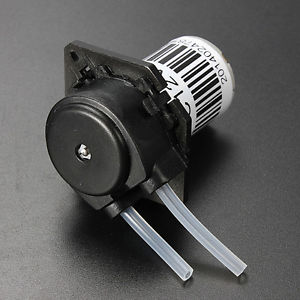Apologies for the rather long time between updates. I have been rather busy with other things. But I have not been ignoring the 3D printer.
Category Archives: Raspberry Pi
Solar Datalogging project is working again!
I’ve been curious about solar energy for quite a long time. Not really from a ‘renewable energy’ point of view, more the physics and efficiencies. I recently went to the Mediterranean and saw a LOT of solar thermal and photo voltaic installs. So here is an experiment to test how they both work in the UK climate.
The experiment uses the following collectors
- 10W 12V solar cell (I had it spare from a previous project that went nowhere)
- 58mm diameter x 500mm long evacuated tube heat pipe solar thermal collector. I love ebay!
Both are mounted to the wall of my garage at the same angle as the roof. Essentially emulating a system placed on the garage roof. Why the garage? Just cos its easier and the roof points the same way as the house.
The test load for the PV is pretty simple. a 30ohm resistor on a heatsink. I measure the voltage and power is V^2 * load resistance.
The solar thermal isn’t quite so easy. First plan involved thermocouples, pumps and flow meters. But when you actually work out the accuracy of the flow meter and thermocouples vs just how little temperature gain you will get the numbers would have been so fuzzy and worthless. OK, take two!
Second plan involved a peristaltic dosing pump and some Dallas DS18B20 temp sensors. Dosing pumps give a known volume of liquid per revolution and the DS12B20 could be put right in the flow. No analogue wires to pick up noise.
I got a tiny pump from ebay. Cost only a few quid. Basically a 360 motor with a 3 rotor pump head and some 2mm ID silicone hose. I fitted it with an IR reflective sensor to measure the RPM. Worked well!
The whole setup was run by a Raspberry Pi with a GertDuino addon board. Not enough IO on the raspberry and I can code Atmels in my sleep. And the spare IO was connected to the leftover parts of an old Maplin wireless weather station. Result!
The data was logged with WeeWx. Its simple and easy to modify, although Python is the work of the devil.
I used copper brake pipe to make a heat exchanger for the solar thermal collector. Brake pipe can be a mare to work with and making a tight coil is hard. I have a lathe so I made a jig to bend the pipe around.

The final coil fitted snugly over the top of the heat pipe.
The whole lot would be covered in 1″ thick pipe insulation. No way heat is leaking out! 30% glycol solution would ensure no freezing!
Small box on the solar cell is the outdoor temp and humidity sensor, it doesn’t live there normally! The pipe insulation is to stop me catching my arm on the corners.
It worked well for about a month. Then I started getting really bonkers thermal readings. Turns out the little pump which was spinning at 100+RPM had split its silicone tube and leaked everywhere! Couldn’t find any suitable tube to replace it so shelved that part for a while.
The weather station and PV logging worked for another 2 months or so before a power cut claimed the file system on the Raspberry Pi. My fault for not backing it up! So 4 month ish of data lost. Bah! Take three!
So gone is the ebay dosing pump and the Raspberry Pi is off to a new home on something less 24/7. OK, what next? Well as I’d based this on a GertDuino I decided to go whole hog and use all Arduino based hardware. I had an Uno lying around and ordered up an ethernet shield. Job done, send the data straight to my server which has a big UPS powering it.
I found a stepper motor based peristaltic pump which would be ideal apart from the price. This whole project has cost very little as its basically odds and ends and cheap bits from ebay. the Pi and GertDuino were the largest capital investments so far.
Hmm.. I have a stepper motor and drive spare.. I have a workshop where I can make stuff.. how hard is a pump? Well not very! A block of delrin made the base and some aluminium made a rotor with some more delrin for the rollers. A length of santoprene tube finished it off. One DIY stepper motor pump.
From left to right:
- Cooling coil for the fluid returning from the solar collector (yes, its a failed brake pipe coil)
- 1ltr container for the heat transfer fluid (Tesco mini chocolate rolls, yum!)
- Pump, 3.5cc per revolution
- Upper right hand end – Arduino Uno, ethernet shield and some veroboard for signal conditioning and connectors
- Lower right hand end – PV load and heatsink
So now we are back in business and logging data! A bit of fine tuning to do but it will be done before June 21st! Want to get that high sun logged.





